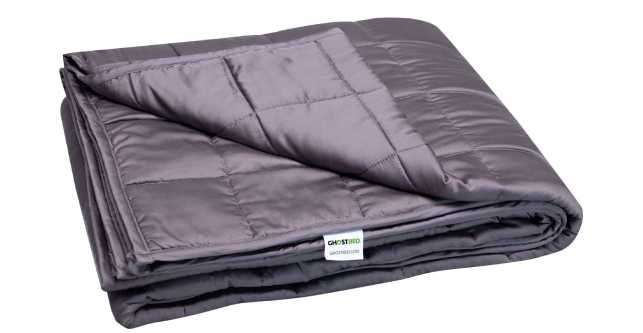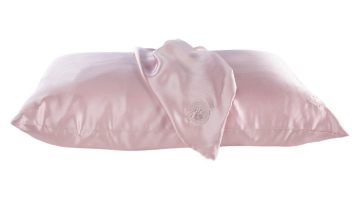Sleeping Elevated Helps with Spinal Alignment & Spinal Health
Last Updated on March 27, 2025
by Marc Werner, Founder - GhostBed
Sleeping elevated can be just what the doctor ordered to improved spinal alignment and find relief of back pain. One will find the best of support, along with a respite from a painful back, by manipulating an adjustable bed frame to just the right position to match the spine’s curvature.
Sleep can hurt spinal health if the resting posture is not allowing for proper spinal alignment.

1. Why Spinal Alignment is Important
2. Why Lying Flat Causes Back Pain
3. Flat on Back
4. Sleeping on Stomach
5. Choose the Correct Mattress and Pillow
6. Mattress Choice
7. Pillow Selection
8. How to Properly Sleep for Spinal Health
9. Back Sleeping
10. Stomach Sleeping
11. Side Sleeping
12. Sleeping Elevated
13. Conclusion
1. Why Spinal Alignment is Important
Those suffering from back pain understand the importance of seeking better spinal health. The spine carries the body so when it is not in its proper alignment more than just back pain is felt. Damage to other body areas and overall health can be affected when this center of the body is not in the best of health. The spine does more than merely work to hold the posture straight and balanced. It also has the important function of serving to protect the central nervous system. The correct alignment of the spine places one’s form in balance, allowing for the central nervous system to properly transfer information between body and brain. When the spine is out of alignment it can not only cause back pain, but can also lead to headaches, pain in extremities’ joints, problems with digestion, and insomnia. Poor spinal position also keeps the central nervous system from properly performing. These symptoms can plunge one into undo anxiety and depression. The harmful results of spinal misalignment all occur from the body being out of balance causing it to manipulate itself in painful ways to do its job.
2. Why Lying Flat Causes Back Pain
Those who find themselves sleeping flat on their back or stomach may also wake with unneeded back pain. This is because the spine has a natural S-curve to it that when lying flat is not properly supported.
3. Flat on Back
The spine is seen to be manipulated to a situation of being bent back flattening out the natural forward curve of the lower back when lying flat in the supine face-up position. Soreness can occur for those who suffer from facet joint syndrome when small joints between vertebrae are inflamed. The act of the spine being bent back when lying flat on the back can also worsen the symptoms of spinal stenosis.
4. Sleeping on Stomach
As opposed to back sleeping, when sleeping on the stomach the back is forced to bend forward. Those with herniated discs will see an increase in pain in this prone position as it forces discs to move even further back, making the lower back to arch from correct positioning. The stomach sleeper can also see more pain to a previously strained back – as the body lying on the stomach can overstretch the already hurting muscle. In addition, the head is forced to be twisted to one side which can cause neck pain and have an impact on proper breathing.
5. Choose the Correct Mattress and Pillow
Choosing a mattress and pillows are subjective to everyone’s needs and wants.
6. Mattress Choice
The best mattress will allow for one to wake fully rested with no pain. The memory foam mattress allows to be molded to the natural curves of the body and spine allowing for perfect support to all pressure points and to cradle the spine in order to keep it aligned for the best of spinal health. A mattress of medium firmness, also known as universal firmness, is seen to be the best choice for those sharing a bed as 80 percent of people have been seen to agree that this firmness level in the perfect choice.
7. Pillow Choice
The selection of a great pillow depends on sleeping position, as well as spinal health needs. The loft, or height, of a pillow should be taken into consideration as a pillow that is too high can create a gap between the neck and bed surface. This will cause strain on the neck, back, and shoulders. A pillow should allow cradled support of the neck to allow for the head to rest. A good memory foam pillow will adjust to allow for the neck to align properly with the chest and lower back to keep proper spinal alignment.
8. How to Properly Sleep for Spinal Health
Sleeping certainly affects the alignment of the spine. Twisting and turning throughout the night to find a comfortable position can result in waking with more pain and stiffness. Sleeping on an adjustable bed frame can help keep the spine aligned to provide less pain and better spinal health. For additional health benefits, read here.
9. Back Sleeping
If you must sleep on the back, then place a pillow between your knees to help keep the natural curve of the lumbar spine in place and allow for the lower back to relax. Be certain to make sure that the head pillow is not too fat as a high pillow can prop the head too far forward and cause more pain. If necessary add a neck roll, or rolled up towel, behind the nick for extra support and to prevent a gap. To support the lumbar, place a foam wedge under the knees. The pillow under the knees helps to relieve stenosis pain and simulates the raising of the knees that an adjustable bed provides.
10. Stomach Sleeping
Stomach sleeping is the most harmful position for spinal health as the head is forced to turn to one side and the spine is hyperextended. Doctors urge patients to attempt to move to slide sleeping instead.
For those who cannot seem to fall asleep except on the stomach be careful to use a thin pillow to support the body to turn slightly to one side. This should help the spine from being too twisted as it is bent forward.
11. Side Sleeping
Side sleepers should sleep with a pillow between the knees. This allows for the knees to be kept positioned so that the top leg does not fall towards the mattress causing the spine to twist.
The head pillow for a side sleeper must allow for the neck to be well supported with no gaps. Find a pillow that will fill in the area between the ear and bed to hold the neck and spine in place.
12. Sleeping Elevated
Sleeping elevated using an adjustable bed base is the ultimate of sleep positions to achieve better spinal health and back pain relief. Many with specific back issues can find relief from pain when sleeping in an elevated position, rather than on a flat bed.
Those with degenerative spondylolisthesis will find that sleeping supporting the knees in a reclining position can ease the painful discomfort felt in the lower back. This elevated position allows for a better night sleep for the sufferers of this condition which causes one vertebra to move forward over another vertebra below.
Osteoarthritis in the spine, also referred to as facet joint arthritis, afflicts many individuals causing the feelings of stiffness and soreness upon waking. Sleeping on an adjustable bed allows for one to position the sleep station in a position that relieves the pain, caused by the compression of joints, providing a better sleep and a less painful wakeup. Spinal stenosis of the lumbar is known to cause pain when attempting to stand up with a straight posture. Relief is commonly found when one bends forward. As it is uncomfortable to stand straight it is also going to cause pain for those attempting to get rest lying flat on a mattress. An adjustable bed allows for one to elevate their body in a more comfortable reclining position to get proper relief and rest when struggling with stenosis pain.
13. Conclusion
Sleeping with back pain can often be a futile attempt to seeking the rest one so badly needs. Choosing to sleep on a memory foam mattress coupled with an adjustable bed frame will allow for a proper reclining position to alleviate back pain and to keep the spine aligned properly. Sleeping elevated for spinal health can be key to keeping painful back problems in check.
Marc has spent the last two decades designing & manufacturing mattresses and other sleep products, drawing on a lifetime of experience working with the material sciences. With several patents to his name, he works closely with the GhostBed team to create products with the perfect balance of comfort & support. Learn More




